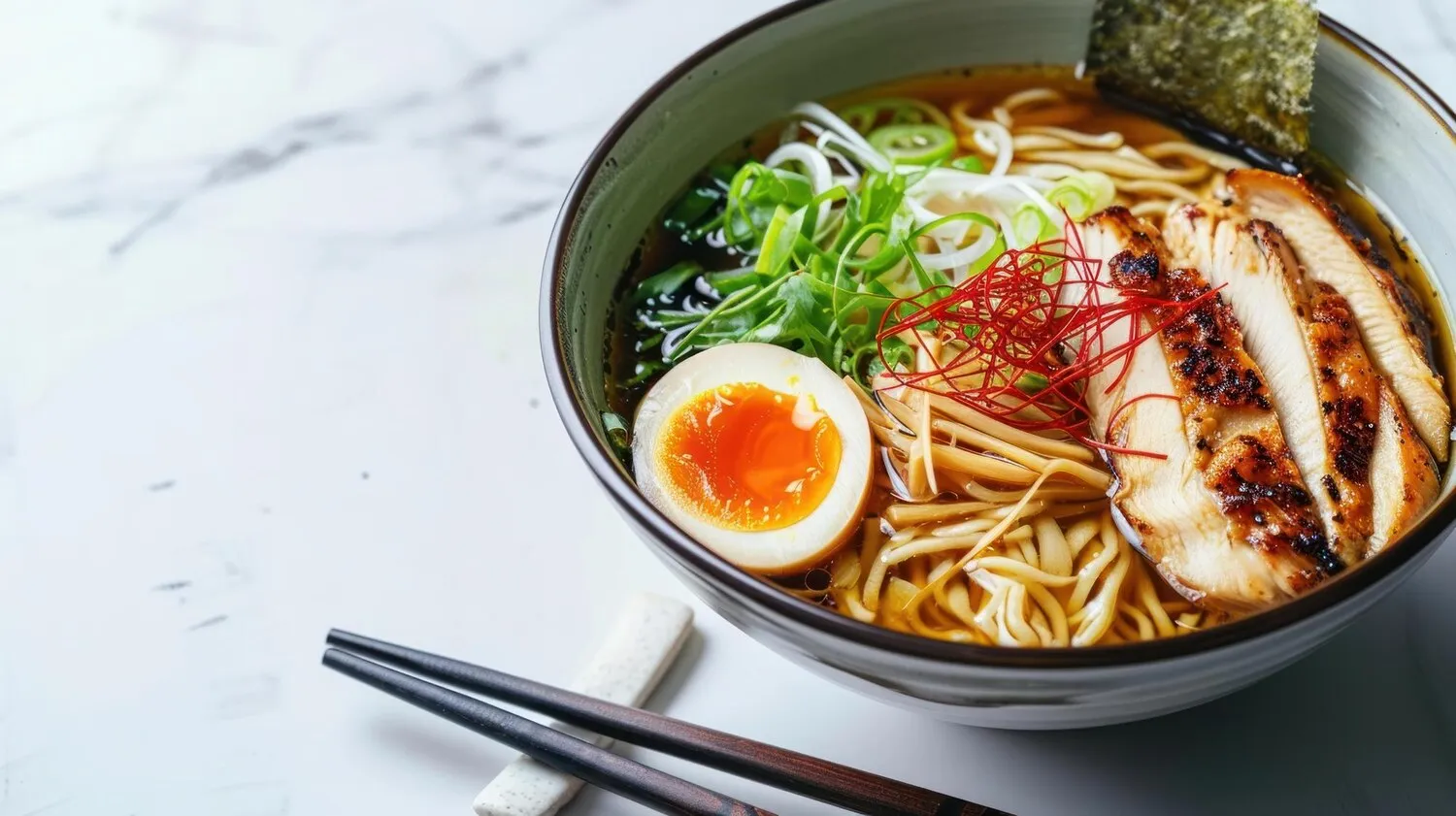
Ramen
Namamen is known for its authentic and delicious ramen. Though specific varieties and descriptions can vary, ramen typically includes broth, noodles, toppings like pork, egg, seaweed, and vegetables.
Nutrition Facts
* The % Daily Value (DV) tells you how much a nutrient in a serving of food contributes to a daily diet. 2,000 calories a day is used for general nutrition advice.
Ramen's origins trace back to Chinese noodle soups, introduced to Japan in the late 19th or early 20th century. It evolved significantly within Japan, with regional variations emerging and becoming a distinct Japanese dish.
Ramen is deeply ingrained in Japanese culture, not just as a food, but as a symbol of regional identity, culinary innovation, and social gathering.
Regional Variations
Each region in Japan boasts its own unique ramen style, reflecting local ingredients and preferences. Examples include Hakata ramen (tonkotsu broth), Sapporo ramen (miso broth), and Tokyo ramen (shoyu broth).
Ramen Shops and Culture
Ramen shops are ubiquitous in Japan, ranging from small, family-run establishments to trendy, modern restaurants. Slurping noodles is considered polite and enhances the flavor.
Ramen as a Social Food
Ramen is often enjoyed as a quick and affordable meal, popular among students, salarymen, and families. It's a common choice for late-night eats and socializing with friends.
Ramen boasts a rich and complex flavor profile derived from its broth, noodles, and toppings, offering a balance of savory, umami, and sometimes spicy notes.
The broth is the foundation, typically made from pork (tonkotsu), chicken (chintan), beef, fish, or vegetables, simmered for hours to extract deep flavors. Key seasonings include soy sauce (shoyu), salt (shio), miso, or garlic. Noodles vary in thickness, shape, and texture, affecting the overall mouthfeel. Common toppings include chashu (braised pork belly), ajitama (soft-boiled marinated egg), nori (dried seaweed), menma (fermented bamboo shoots), scallions, and bean sprouts. Chili oil or other spicy elements add heat.
Noodle Hardness
Many ramen shops allow you to specify the firmness of your noodles (e.g., 'kata' for firm, 'futsu' for normal, 'yawa' for soft).
Kaedama (Noodle Refill)
Some ramen shops offer 'kaedama,' an extra serving of noodles to add to your remaining broth.
Enjoying the Broth
Don't be afraid to drink the broth! It's a sign of appreciation and allows you to savor the full flavor of the ramen.
Customize Your Ramen
Feel free to add extra toppings, spices, or seasonings to customize your ramen to your liking. Many shops offer a variety of options.
Explore additional Soup, Noodles dishes and restaurants
Explore Soup, NoodlesDiscover top dining spots and culinary experiences in Basel.
Explore BaselLearn more about the food culture, restaurant scene, and culinary heritage of Switzerland.
Explore Switzerland